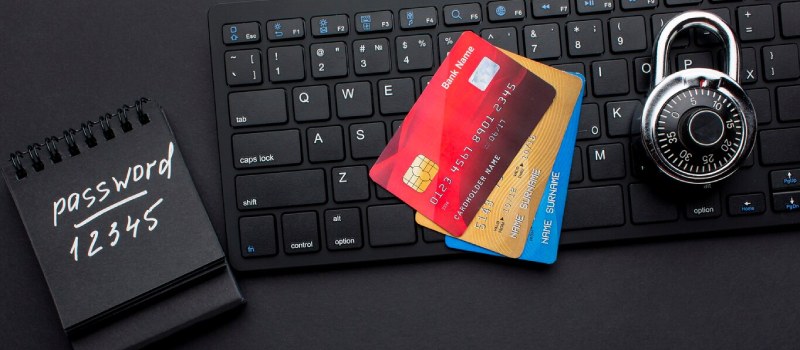Online shopping has become a major part of our lives. Its convenience allows us to get whatever we need right from the comfort of our homes quickly and easily. Unfortunately, this convenience comes with its own downside—scammers.

Every year, thousands fall prey to online shopping scams. The risks are real, whether it’s fake websites, counterfeit goods, or stolen payment information. Fortunately, there are ways to protect yourself from these fraudsters.
Let’s go through some of the most common online shopping scams and show you how you can avoid them.
Types of Common Online Shopping Scams
Phishing Scams
These are some of the most prevalent and dangerous scams when it comes to online shopping scams. These sneaky scams make you believe you’re on a real website or getting an email from a trusted brand, but they’re just trying to steal your info.
Here’s how it works: You receive an email from a popular store offering a big discount and asking you to click a link. When you do, you’re taken to a website that looks just like the real retailer’s site. But when you enter your payment details, scammers snatch them instead.
How to avoid it:
- Always check the URL of the website. The majority of phishing sites have a similar URL, just with some slight variation; for example, “amaz0n.com” instead of “amazon.com.”
- Look for grammar mistakes or odd formatting in emails. These are often signs of a phishing attempt.
- Never click on links from emails. Instead, type the website directly into your browser.

Non-Delivery Scams
A no-delivery scam occurs when you buy something online and don’t receive it at all. Most of this scam usually happens on unverified websites or even when dealing with any sellers on online marketplaces.
Here’s how it goes down: You spot an amazing deal on a website you’ve never heard of. The product looks fantastic, and the price is unbelievable. You go ahead and make the purchase, but weeks go by, and you still haven’t received anything. You try to reach out to the seller, but surprise, surprise – they’ve disappeared.
How to avoid it:
- Always shop from verified websites or trusted sellers.
- Look for contact information and ensure the website has a customer service phone number or address.
- If you’re on a marketplace like eBay, check the seller’s reviews before purchasing.
Counterfeit Goods Scams
Counterfeit goods are a major issue in online shopping. Scammers sell fake versions of popular products, like designer bags or electronics, at discounted prices. The products are low quality, but the price tag makes them seem like a great deal.
How to avoid it:
- Be wary of prices that seem too good to be true. If an item is significantly cheaper than normal, it’s probably fake.
- Check the seller’s return policy. Legitimate sellers will offer a clear refund and return options.
- Watch for third-party reviews about the seller or website.

Payment Fraud
Some fraudsters create a dummy payment gateway on a website to steal your credit card information. Instead of processing your payment, the sites take your card details, and you see strange charges on your card shortly after.
How to avoid it:
- In case you are making an online payment, always utilize trusted payment methods such as PayPal or credit cards that offer fraud protection.
- Look for “https://” in the URL. The “s” indicates the website is secure.
- Never input your payment information on an unsecured or unfamiliar website.
Fake Reviews and Ratings
Some online sellers pad their offerings with phoney reviews and ratings. They pay people, in some cases, to use bots to write rave reviews with the intent to dupe buyers into buying second-tier or worse products.
How to avoid it:
- Look for detailed reviews with pictures. Fake reviews tend to be vague and overly positive.
- Check multiple review sites. If the product has mixed reviews elsewhere, it’s probably not as great as it seems.
- Use review-checking tools like Fakespot to detect fake reviews.
Tips on Avoiding Online Shopping Scams
Check Website Credibility
Checking the credibility of the website is the first step to take to keep away from falling victim to any online shopping scam. Make sure it’s genuine before finally giving any of your personal or payment information.
Read Reviews and Ratings
Read reviews and ratings before ordering anything. Sometimes, they will give you an idea about the product quality and the seller’s reliability, too.
Use Secure Payment Methods
One of the simplest methods of keeping yourself safe from scams is to use methods of safe payment. Never send money directly or using unsecured means.
Look for Return and Refund Policies
Reputable sellers will be offering policies on returns and refunds. Sellers who have no policies at all or make returning items difficult are those to stay away from.
Avoid Unrealistic Deals
It’s always tempting to go for the best deal, but if something sounds too good to be true, it probably is. Scammers often lure in buyers with unrealistic discounts.
Steps to Take If You Fall Victim to a Scam
If you realize you’ve been scammed, don’t panic. There are steps you can take to protect yourself and possibly recover your money.
Report the Fraud
Immediately report the scam to the platform where you made the purchase, such as Amazon or eBay. They may be able to help you get your money back.
Contact Your Bank or Payment Provider
If you used a credit card, call your bank to dispute the charges. Most banks have fraud protection policies that let them reverse the transaction.
Change Your Passwords
If you have given out personal information, such as a login and password, change your passwords immediately. Ensure that you use strong passwords and different passwords on different sites.
Monitor for Identity Theft
Make sure to regularly check your credit report and bank statements for any strange or suspicious activity. If you see anything out of the ordinary, it’s important to report it right away.
To Wrap it Up
Online shopping is great for convenience, but one has to be vigilant. Scammers come up with new techniques day in and day out, but all the tips above will help you avoid their traps. Always buy things from trusted websites, make your payments via a secured network, and never let a red flag go unnoticed.
In case of problems, you can contact the Consumer Protection Committee.
